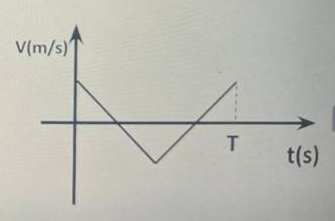Choose the correct representation of of conductometric titration of benzoic acids vs sodium hydroxide.
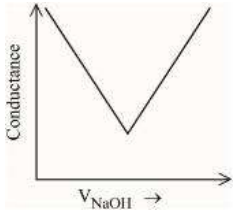
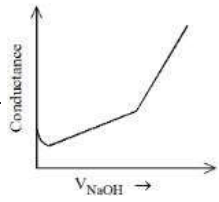
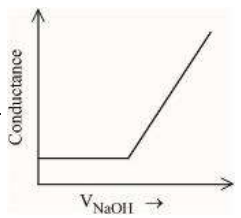
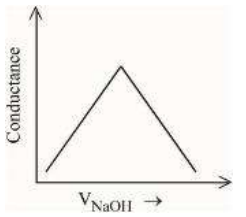
To solve the question regarding the conductometric titration of benzoic acid (C6H5COOH) with sodium hydroxide (NaOH), we need to analyze the expected changes in conductance during the titration process. Here’s a step-by-step breakdown:
Step 1: Understand the Components
- Benzoic Acid (C6H5COOH): This is a weak acid that partially dissociates in solution.
- Sodium Hydroxide (NaOH): This is a strong base that completely dissociates in solution.
- Conductometric Titration: This method measures the conductivity of the solution to determine the endpoint of the titration.
Step 2: Initial Conductance
- At the start (point A), the solution contains only benzoic acid, which has a lower conductivity due to the presence of fewer ions (H+ ions).
Step 3: Adding NaOH
- As we begin to add NaOH (moving from point A to point B), the NaOH will react with the benzoic acid. The H+ ions from the benzoic acid are replaced by Na+ ions.
- Since Na+ ions contribute to conductivity, but the overall number of ions does not significantly increase at this stage, the conductance will decrease initially (from A to B).
Step 4: Reaction Completion
- As we continue to add NaOH (moving from point B to point C), the benzoic acid will start to neutralize completely, forming sodium benzoate (C6H5COONa), which is a salt that dissociates completely in solution.
- This results in an increase in the number of ions in the solution, leading to an increase in conductance (from B to C).
Step 5: Beyond the Equivalence Point
- After reaching the equivalence point (point C), if we continue to add more NaOH (moving from point C to point D), the concentration of Na+ and OH- ions will increase significantly.
- This leads to a steep increase in conductance due to the high concentration of ions in the solution (from C to D).
Conclusion
Based on the analysis:
- The correct representation of the conductometric titration curve for benzoic acid versus sodium hydroxide starts with a decrease in conductance, followed by a gradual increase, and finally a steep increase after the equivalence point. This matches the description of Option 2.
Final Answer
The correct representation of the conductometric titration of benzoic acid vs sodium hydroxide is Option 2.
- Benzoic Acid (C6H5COOH): This is a weak acid that partially dissociates in solution.
- Sodium Hydroxide (NaOH): This is a strong base that completely dissociates in solution.
- Conductometric Titration: This method measures the conductivity of the solution to determine the endpoint of the titration.
- At the start (point A), the solution contains only benzoic acid, which has a lower conductivity due to the presence of fewer ions (H+ ions).
- As we begin to add NaOH (moving from point A to point B), the NaOH will react with the benzoic acid. The H+ ions from the benzoic acid are replaced by Na+ ions.
- Since Na+ ions contribute to conductivity, but the overall number of ions does not significantly increase at this stage, the conductance will decrease initially (from A to B).
- As we continue to add NaOH (moving from point B to point C), the benzoic acid will start to neutralize completely, forming sodium benzoate (C6H5COONa), which is a salt that dissociates completely in solution.
- This results in an increase in the number of ions in the solution, leading to an increase in conductance (from B to C).
- After reaching the equivalence point (point C), if we continue to add more NaOH (moving from point C to point D), the concentration of Na+ and OH- ions will increase significantly.
- This leads to a steep increase in conductance due to the high concentration of ions in the solution (from C to D).
Based on the analysis:
- The correct representation of the conductometric titration curve for benzoic acid versus sodium hydroxide starts with a decrease in conductance, followed by a gradual increase, and finally a steep increase after the equivalence point. This matches the description of Option 2.
The correct representation of the conductometric titration of benzoic acid vs sodium hydroxide is Option 2.
Topper's Solved these Questions
Similar Questions
Knowledge Check
Choose the correct representation of effect of sewage discharge on important characteristics of a river.
A B
B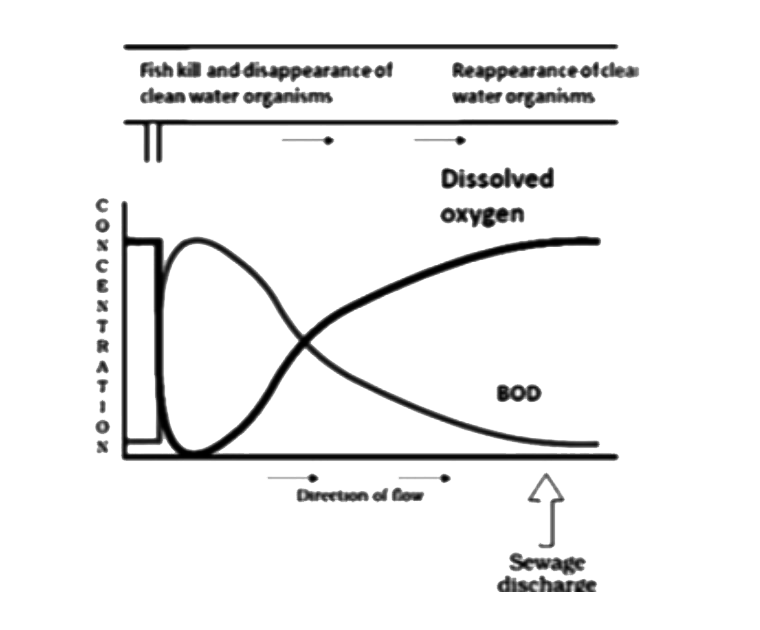 C
C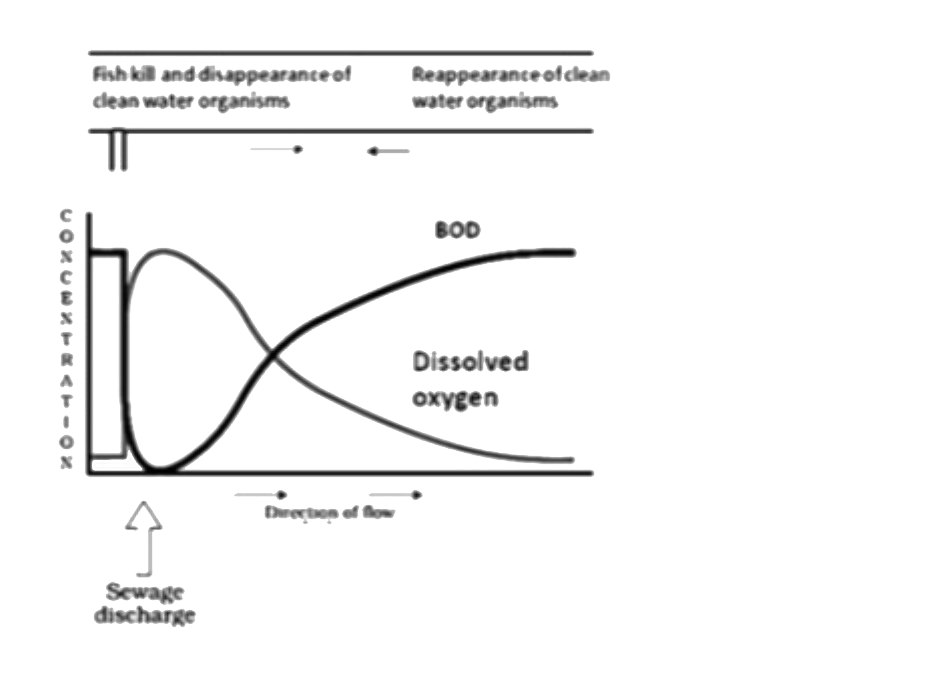 D
D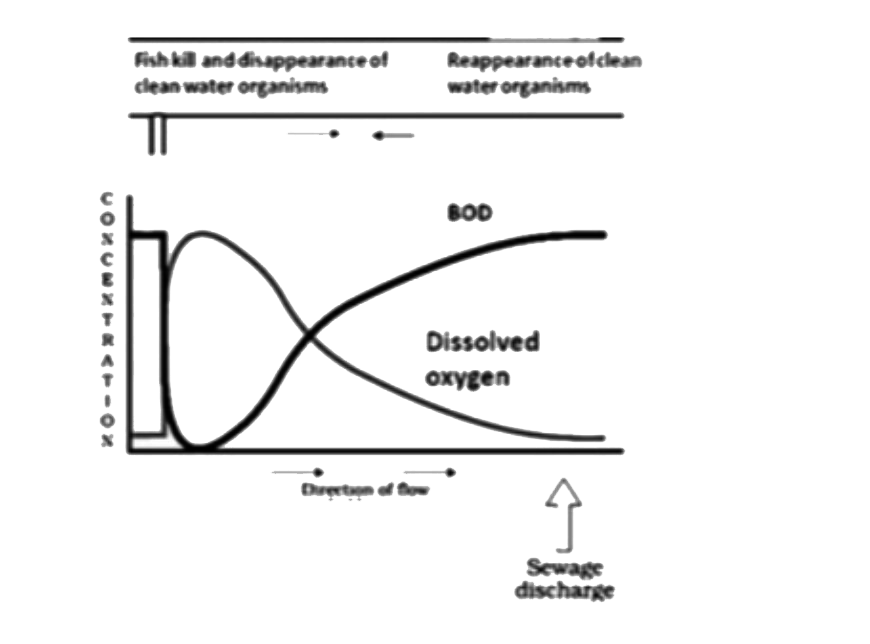
which of the following plots will obtained for a conductometric titration of strong acid against a weak base?
A B
B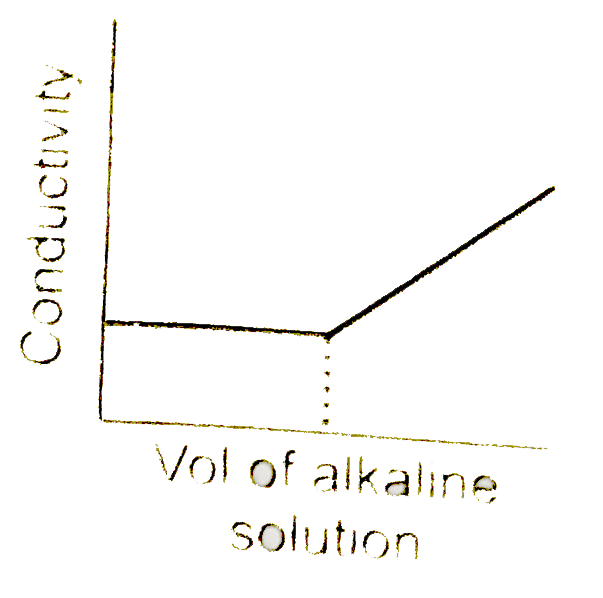 C
C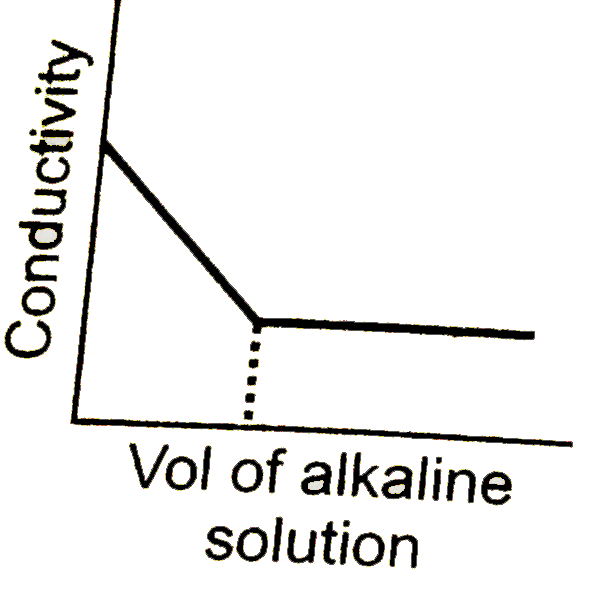 D
D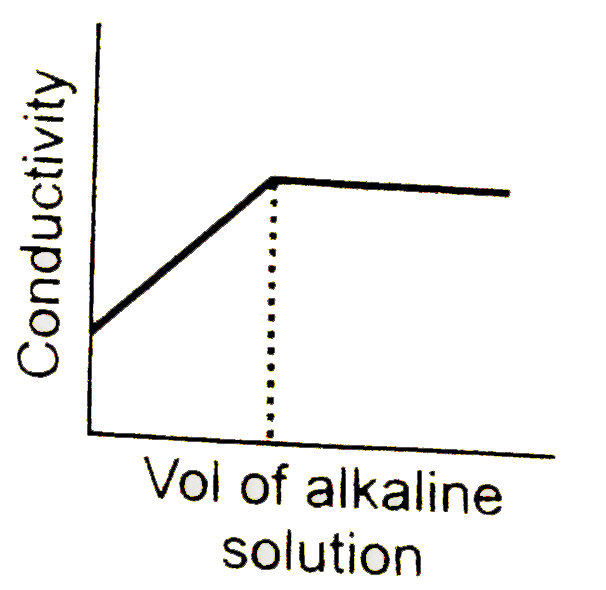
Which of the following is the correct representation of 1-amino acids?
A B
B C
C D
D
Explain why no indicator can be used for the titration between formic acid and ammonium hydroxide
View SolutionWhat is the use of an indicator in titration ? Name the indicator used when sodium hydroxide is titrated against sulphuric acid
View SolutionWhich of following indicators is used in the titration of oxalic acid with sodium hydroxide solution?
View SolutionFollowing two graphs are based on the conductometric titration of acid-base reaction. Answer the questions given at the end of it.

Select correct statement,
View SolutionThe electricity conductivity of a solution serves as a means of determing the end point in a chemical reaction, involved in the titration of acids, bases, or precipitation. Which of the following conductometric titrations represent the curve of HClvsNH4OH
x− axis ⇒ Volume of alkali added
y− axis⇒ Conductivity
View Solution
